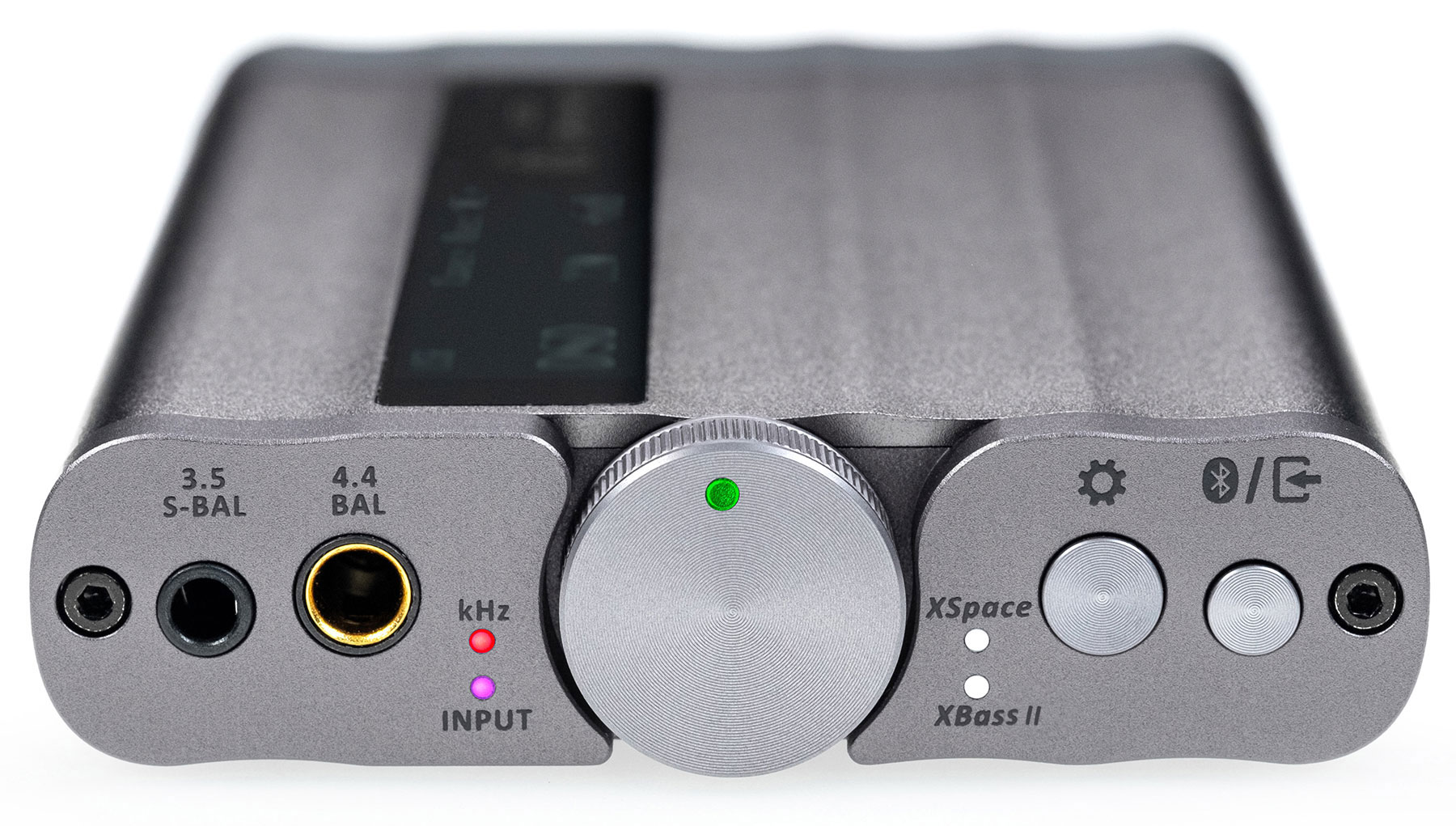
Since it began life in Southport, UK, in 2012, iFi has established an enviable reputation. In particular, its extensive range of digital-to-analogue convertors (which often double as headphone amplifiers) is always there-or-thereabouts when class-leading products are under discussion. The company’s range of DACs is extensive, the spread of prices at which they sell is significant.
So we don’t mind admitting we have high hopes for the xDSD Gryphon. It’s an evolution of 2018’s xDSD, and it’s specified to cover every realistic eventuality (and quite a few unrealistic ones too). Imagine how startled everyone would be if it turned out to be no good…
iFi xDSD Gryphon: Price & Availability
The iFi xDSD Gryphon portable DAC/headphone amp is on sale now, and in the United Kingdom it will cost you a minimum of £549 no matter how long or hard you try to find a better deal. In the United States it goes for around $599, while in Australia it’s yours for AU$899 or thereabouts.
If you judge a product partially by the amount of actual stuff your money buys you, the xDSD Gryphon is going to seem pricey in the extreme. But as any sensible person knows, it’s not how big your equipment is but how well it performs…
iFi xDSD Gryphon review: Features & What's New?
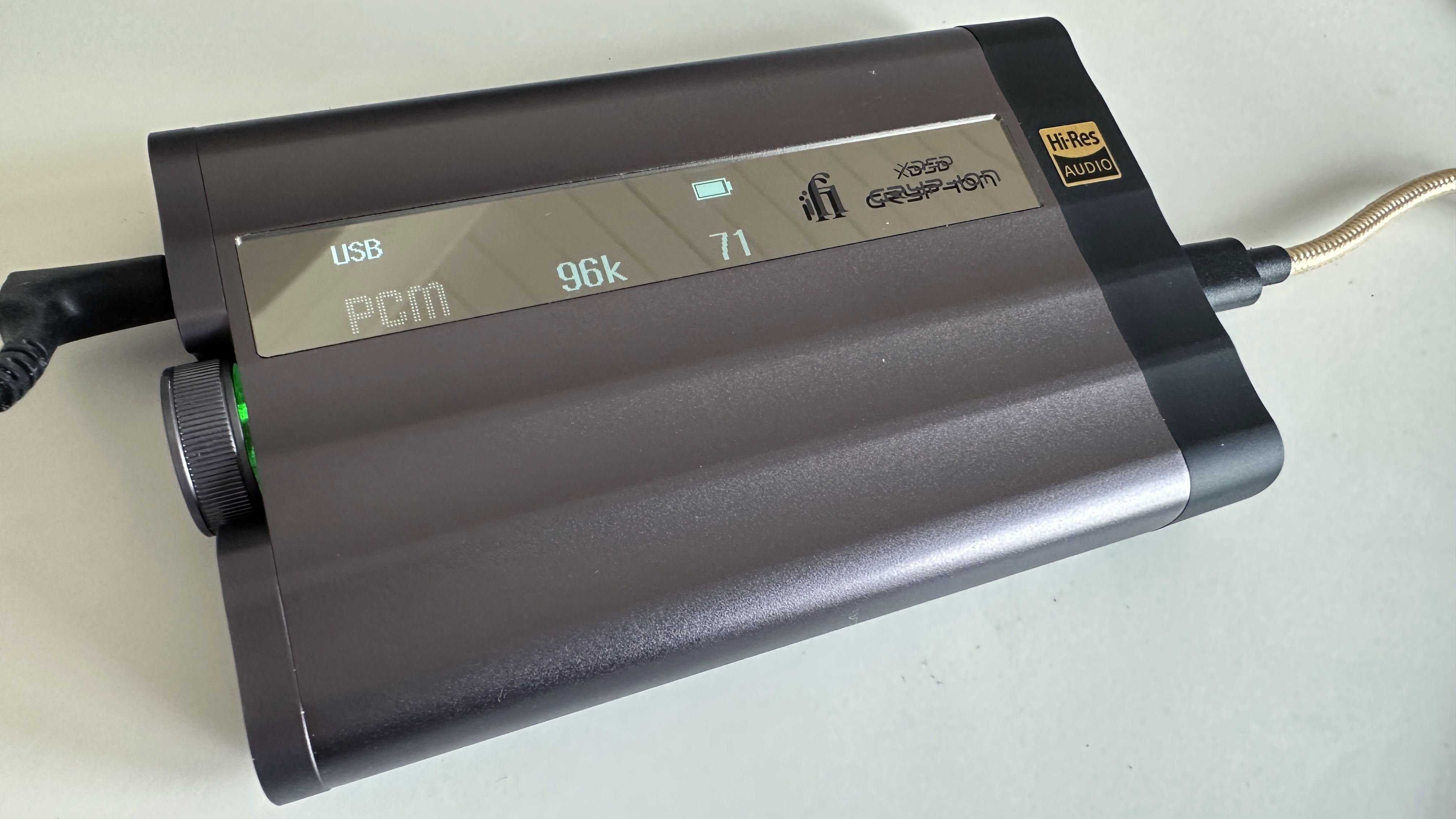
Thanks in large part to its Burr-Brown DAC chipset, the xDSD Gryphon is capable of handling a huge number of different digital audio file types. If you’re using the USB-C input, it’s able to deal with PCM up to 32bit/768kHz, DSD512, DXD768 and fully unpack MQA files. The digital coaxial input, meanwhile, is good up to 24bit/192kHz.
No matter the file type you’re listening to, though, you have a number of options as to how it’s handed over to your headphones. ‘Xspace’, for example, wants to give a bigger sensation of soundstaging. ‘Xbass II’, it almost goes without saying, brings greater low-frequency presence - and can be augmented by the physical ‘bass and/or presence’ switch on the unit.
Digital sources can also be finessed by using one of three digital filters: ‘bit-perfect’, ‘standard’ and ‘GTO’ (which stands, as we all surely know, for ‘Gibbs Transient Optimised’). And those who are using especially high-sensitivity in-ear monitors for listening can nullify the hiss such headphones can sometimes introduce using the ‘IEM match’ switch on the bottom of the Gryphon.
Wireless connectivity, meanwhile, is taken care of by Bluetooth 5.1 - codec compatibility extends to SBC, AAC, aptX (HD, Adaptive and Low Latency), HWA and LDAC, so there should be something there to suit you. And all the most significant circuitry - Bluetooth, amplification and digital-to-analogue conversion - is kept isolated to reduce cross-talk and other interference.
The xDSD Gryphon is battery-powered, of course - that’s how products like this perform to their maximum. The iFi is fitted with a 3600mAh battery, which is good for around eight hours of action before it requires recharging. From flat, it’ll take a couple of hours to brim this DAC with power.
Unlike a lot of rival brands, iFi always does the right thing when it comes to accessories. Yes, the case for the xDSD Gryphon is a cost option - but the DAC is supplied with USB-C / USB-C, USB-C / Lightning and USB-C / USB-A cables as standard. They’re short on length, sure, but they’re long on quality.
iFi xDSD Gryphon review: Performance
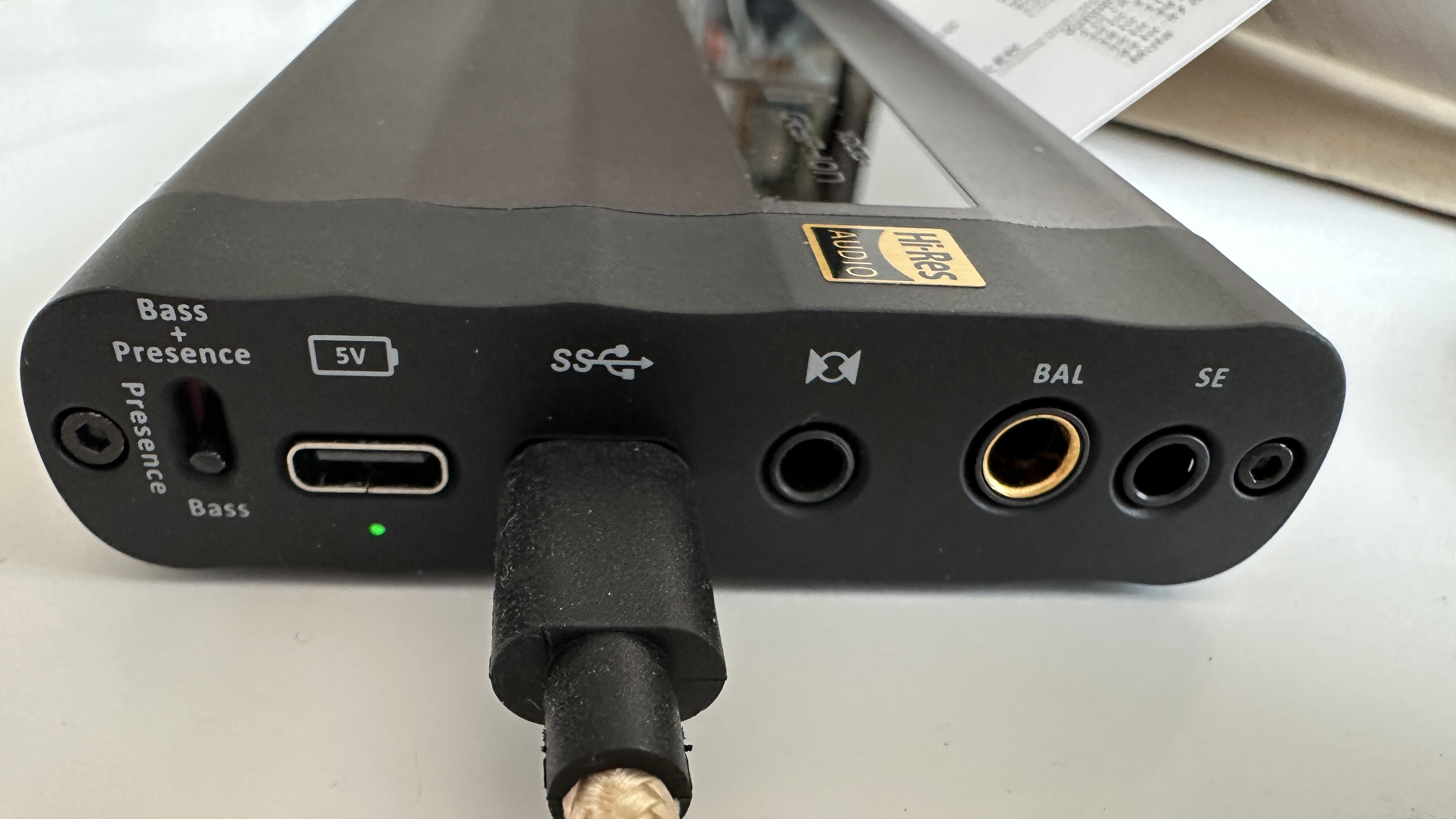
To start with, it makes sense to listen to the xDSD Gryphon in ‘vanilla’ mode - that’s to say, with filters set to ‘min’ and without any assistance from ‘Xpace’ or ‘Xbass II’. With digital audio files ranging from 320kbps MP3 stuff to DSD64 delivered via a 2020-model Apple MacBook Pro, it’s safe to say the iFi does a prodigious job. It’s a deeply satisfying and intermittently thrilling listen.
The overall sound is pacy and energetic, with real momentum in the lower frequencies without any apparent lack of substance or scale. Bass sounds hit with power and determination, but they’re controlled with such straight-edged precision that they can initially sound a little slight. That’s not the case, though - they simply don’t overstay their welcome, so as well as underpinning music they also grant it proper impetus.
It’s a similarly satisfactory story at the opposite end. Treble sounds bite and crunch with real purpose but, even though the iFi is capable of driving most headphones to significant volume levels, treble sounds never get edgy or coarse. As with bass information, detail levels are high and there’s wide-ranging tonal variation. And in the midrange, voices are absolutely packed with information - and as a result they sound characterful and communicative. No matter a vocalist’s level of competence or commitment, you’re never left in any doubt as to their motivations.
The xDSD Gryphon ties the entire frequency range together well, and has a fine facility with the unity and ‘timing’ of a recording - even cut’n’paste sample-heavy recordings sound of a single piece. As far as dynamic range is concerned, the iFi is more than attentive enough to make minor harmonic variances obvious, and deep-breathing enough to shift smoothly through the gears when a recording starts its final crescendo or drives into the last chorus. There’s an effortlessness to its presentation that is emphatically not to be confused with a lack of engagement.
The soundstage it creates is big, coherent and properly organised. Spaces between elements of a recording are made apparent, but there’s no remoteness or individualism about the DAC’s presentation - everything in a recording gets the space to do its thing, but it relates to everything else in the recording nevertheless.
Switching between filters can make little differences around the edges of the overall performance, but in all honesty the broad characteristics of the Gryphon don’t change all that markedly. And it maintains its sonic consistency through any of the wired or wireless digital inputs - although obviously the quality of the wireless source and its codec compatibility has a bearing. But the iFi is more concerned with the quality of the best wired headphones you plug into it - it has no problem driving even tricky ‘phones, but it’s not especially impressed with less capable pairs and it’s not about to hide its lack of tolerance.
iFi xDSD Gryphon review: Design & Usability
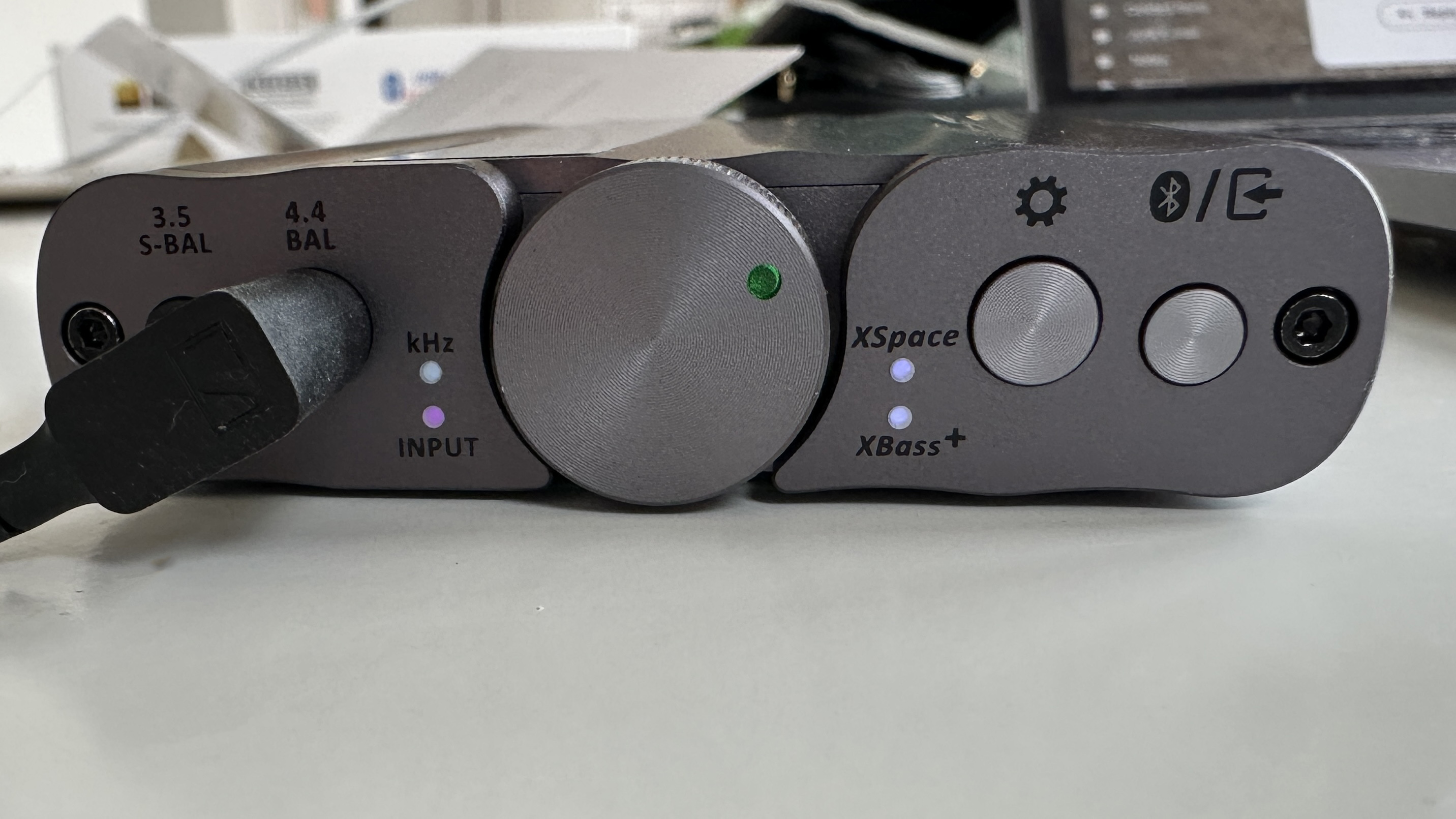
At 19 x 75 x 123mm (HxWxD) and 215g, the iFi xDSD Gryphon is a compact device, halfway between being a truly pocket-sized portable device and a desktop device. The chassis is almost entirely aluminium (which explains the weight, or lack thereof), and its bumpily ridged design is both tactile and visually interesting. Only a little mirrored strip on the top surface, beneath which is a bright white OLED display, breaks up the look.
iFi is many things, but a designer of intuitive and easy-to-understand user interfaces it is not. The xDSD Gryphon is just the latest iFi product to insist you commit the meanings of numerous colours to memory in order to understand exactly what’s going on, and just the latest to make me think that life is simply too short.
A central push/turn dial on the fascia controls volume, power on/off, and menu navigation. It’s accompanied by a ‘settings’ button, quick presses of which turn ‘Xspace’ and ‘Xbass II’ on or off, while a longer press gets you access to the on-screen menu - from here you can select your preferred digital filter, set a maximum volume and adjust the brightness of the screen itself. A button next to this dial deals with Bluetooth pairing and physical input selection. The fascia also features unbalanced 3.5mm and balanced 4.4mm headphone outputs.
There are also five tiny yet important LEDs. One is in the rotary dial, and glows one of five different colours to indicate volume level (or flashes when the device is muted). There is one each to reveal whether or not the ‘Xbass II’ and/or ‘Xspace’ circuitry is engaged. There’s one to reveal the input that’s in use (four colours) and one to reveal the audio format currently being dealt with (seven colours, at least two of which are very similar). ‘Intuitive’ it ain’t.
On the rear panel, meanwhile, there are two USB-C sockets (one for charging, one for data transfer), balanced and unbalanced analogue inputs, and a 3.5mm digital coaxial input. There’s also a three-position switch to toggle the ‘Xbass II’ tone between ‘bass’, ‘presence’ or ‘bass and presence’. It’s even smaller than the toggle switch on the bottom of the xDSD Gryphon that aims to reduce latent hiss from high-sensitivity in-ear monitors.
iFi xDSD Gryphon review: Verdict
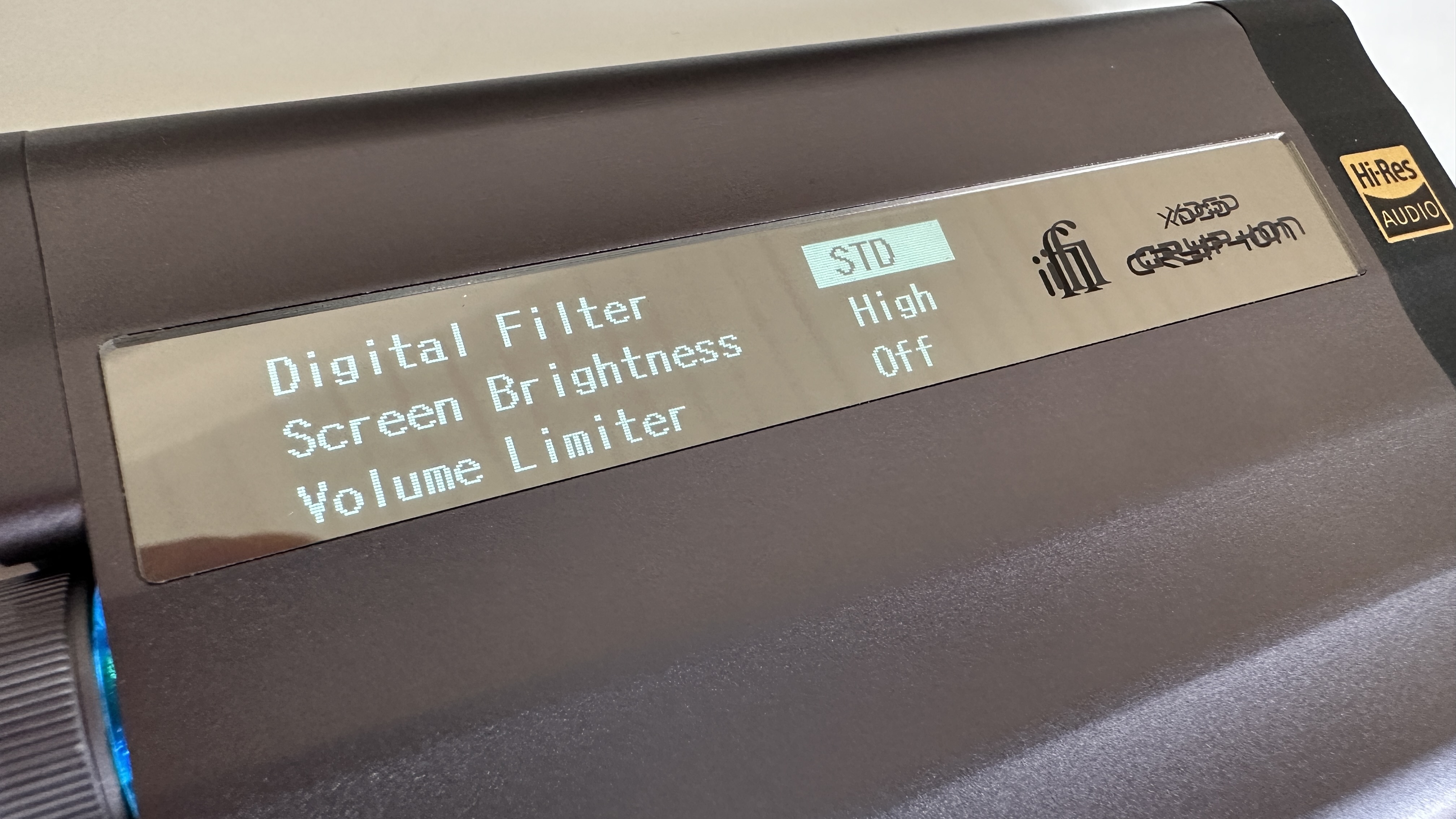
It’s possible to buy a more affordable product from iFi and get a big helping of the sort of performance that’s available here, it’s true. But if wireless connectivity is as important as the wired equivalent, and if you’re in the happy position of being able to afford it, the xDSD Gryphon makes a huge amount of sonic sense.
Also consider
It’s a brave listener that ignores Chord’s mighty Mojo DAC/headphone amp when shopping for a portable device that won’t break the bank too comprehensively. The Mojo sounds exquisite, though perhaps not as out-and-out fleet-footed as the iFi - and it has a control interface that is, in its own way, perhaps even more daft than the Gryphon’s. It goes without wireless connectivity, though - which may tip the balance for you.







